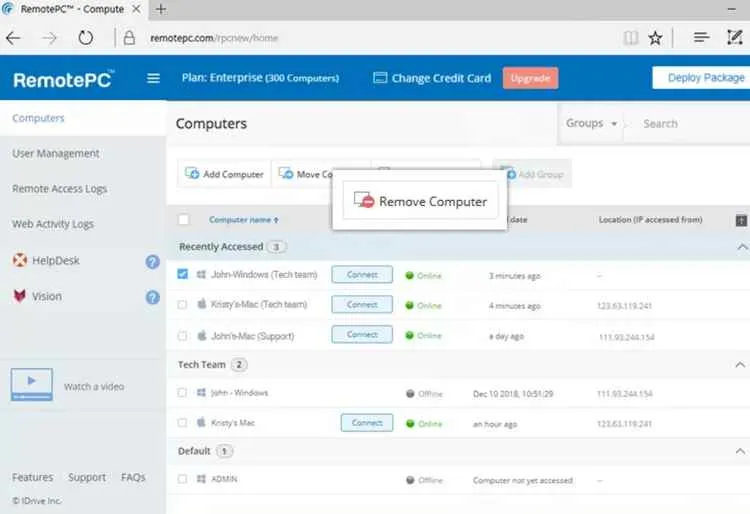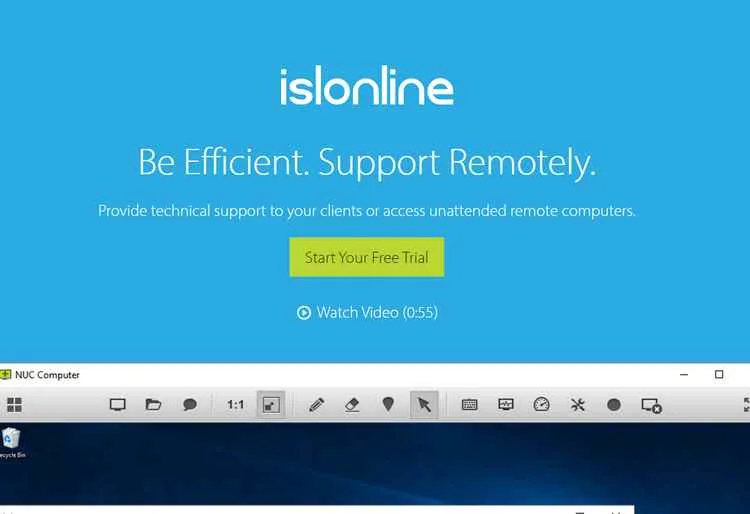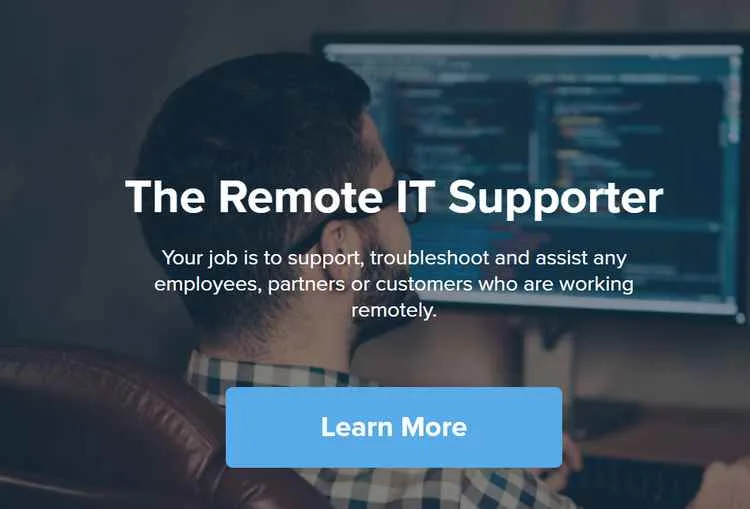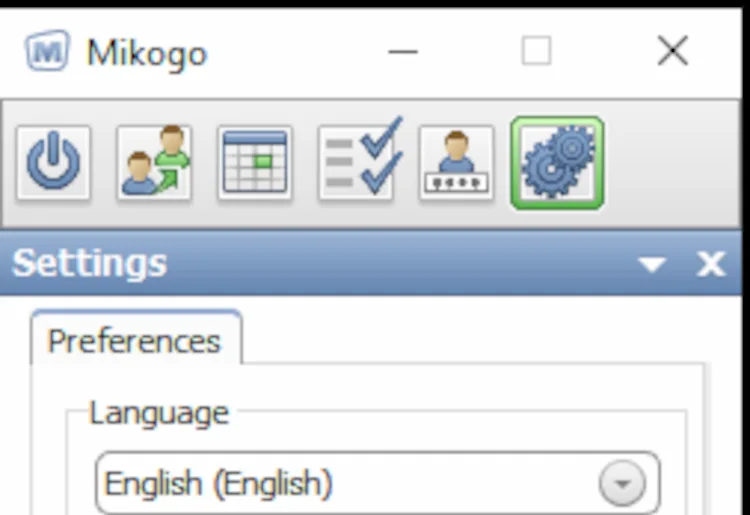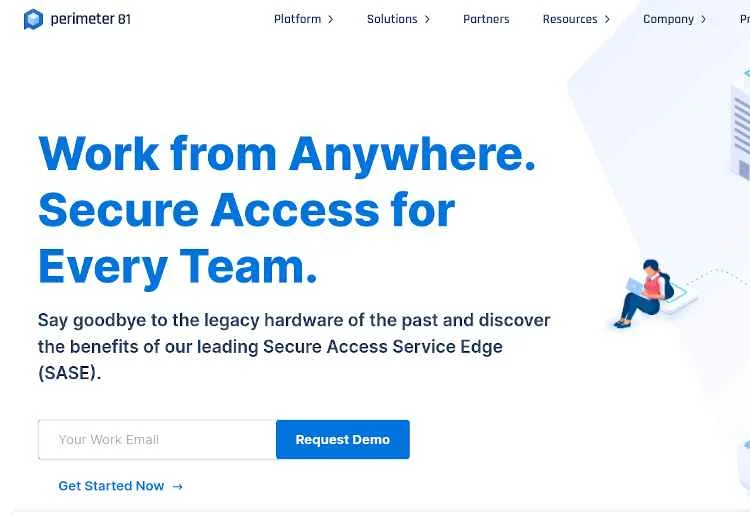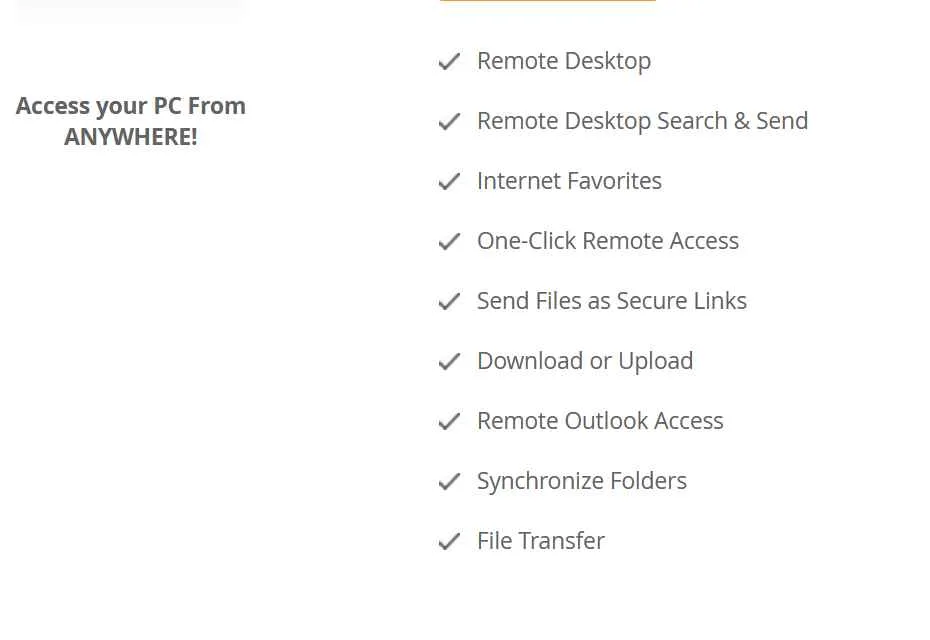The Best Remote Access Software 2022 – Get Access From Anywhere

Remote access software is an important tool for those that want to access their computer remotely and conveniently. Unlike virtual private networks (VPNs) for securing remote access to a company’s server, remote desktop tools work by simply allowing users to access a copy of the display server on their computer remotely.
This means that users can “log in” to their computer remotely and use it just as if they were sitting in front of it in their home/office. However, using a remote desktop, the physical computer to which the user is connecting to is in use. That means that it typically needs to be powered on—although many remote access tools are able to remotely activate or launch the computer (we’ll look at wake on LAN and WAN later in this article).
While users are using the computer, the device remains connected to its local network. This allows users to manipulate files on a company network, for example, without having to secure the connection with something like a VPN. It also means that the user will be able to access other devices on the computer’s network—such as, say, an office printer. By being able to access one device on the local network, this saves the user from having to set up remote connectivity with every other device on the network.
For users that want to remotely connect to a personal or work device, but without the hassle of setting up a VPN connection, remote access is a great option. They don’t typically require the assistance of an IT team and are usually quick and easy to setup. Enterprise tools can even typically be remotely installed on endpoints over the network.
Best Project Management Tools
u
u
u
u
u
#1
- Best for :- Users that need AES 256-bit encryption
- Price– $35/computer/month
- File Sharing – Yes
- Real-time Chat– Yes
- Security- 256-bit AES encryption
#2
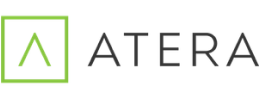
- Best for : MSPs and support teams
- Price– From $79 per technician per month
- File Sharing – Yes
- Real-time Chat-Yes
- Security- UDP port 443
#3
- Best for: Personal use, small businesses, helpdesk
- Price– Starting from $22.12 per year
- File Sharing – Yes
- Real-time Chat-Yes
- Security – AES 256-bit encryption
#4
- Best for: IT support teams
- Price– $145 for 500 minutes $990 for lifetime license.
- File Sharing – Yes
- Real-time Chat-Yes
- Security- RSA 2048/4096-bit
#5
- Best for: Companies with large remote access requirements
- Price– From $33 per device per year
- File Sharing – Yes
- Real-time Chat-Yes
- Security- AES 256 bit encryption
#6

- Best for: Small teams that need support
- Price– From $14 per month
- File Sharing – Yes
- Real-time Chat-Yes
- Security- 128 bit
#7

- Best for: Enterprise organizations with connecting users
- Price– From $8/month plus a per-gateway fee.
- File Sharing – No
- Real-time Chat– No
- Security- AES 256-bit
#8

- Best for: IT support teams
- Price– $420 per month (Pro, up to 100 users)
- File Sharing – No
- Real-time Chat– No
- Security- HTTPS
#9

- Best for: Windows users
- Price– Starting from $49.95/year.
- File Sharing – Yes
- Real-time Chat-No
- Security-RDP tunnel (SSH)
#10
- Best for: Remote access for helpdesks
- Price– From $15/agent/month
- File Sharing – Yes
- Real-time Chat-Yes
- Security- AES 256 bit
The Best Remote Access Software – An In-Depth Look
1
ZenBusiness makes starting a business simple and straightforward – by providing superior products, services, and support every step of the way. This service uses technology and automated processes to provide entrepreneurs with a fast, low-cost way to form and manage businesses. Over 50,000 new companies have already trusted ZenBusiness for formation in 2020.
Its all-in-one platform keeps legal documents, such as EINs and Operating Agreement templates, easily accessible and all in one place. As an added benefit, all ZenBusiness plans include their Registered Agent Service, which satisfies all legal requirements set by your state.
All of this, along with their 100% Accuracy Guarantee, is why ZenBusiness is a standout choice for business formation. We trust they’ll help you get your business up and running in no time.
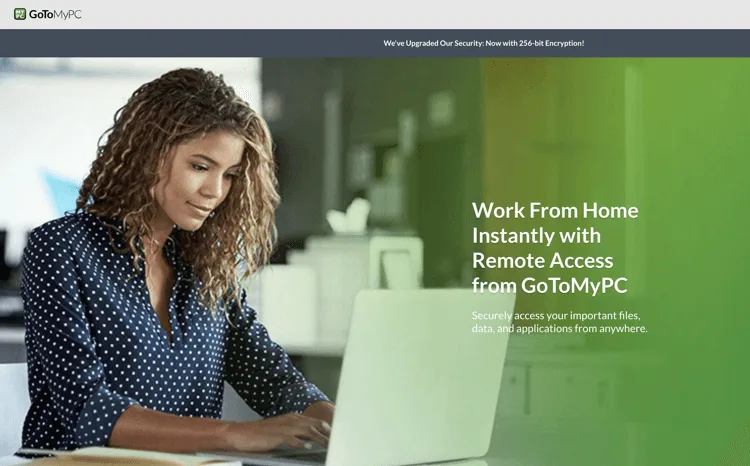
- Best for- Users that need AES 256-bit encryption
- Price - $35/computer/month
- Security - 256-bit AES encryption
GoToMyPC is a remote access tool intended for users that need to access files, and view their screen remotely. It can run on a variety of mobile devices including iPads, iPhones, Android devices, and the Kindle Fire.
The company also recently upgraded its encryption strength to 256-bit AES which puts it on par with other tools in the industry.
Prons
- No Wake on LAN with single user license
- Expensive for personal use
Cons
- No cancellation once submitted to state
- Lack of nonprofit filing options
2

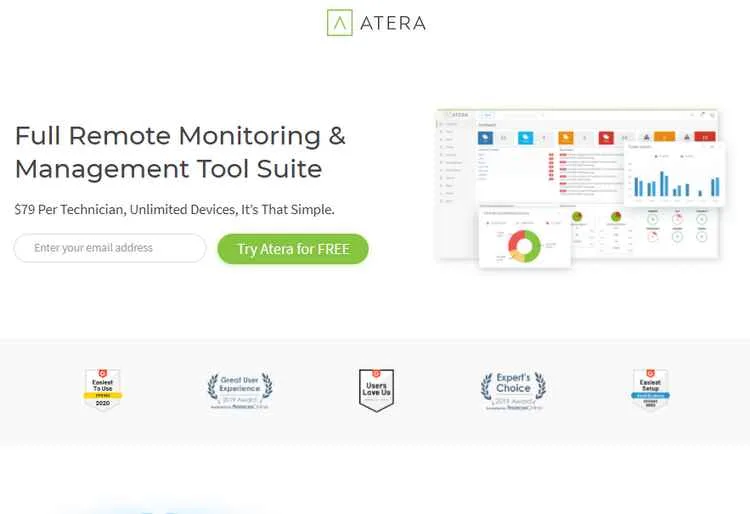
- Best for- MSPs and support teams
- Price- From $79 per technician per month
- Security- UDP port 443
Atera includes a remote access functionality as part of its device monitoring and support plans, which can be used by MSPs and support staff in order to provide remote support.
The tool requires the installation of a connection agent on supported endpoints and a connection tool to supplement the web UI. Connections are fast and secure.
Prons
- Real time connectivity
- Secured encrypted connection
- Windows and Mac connection agents
Cons
- No Linux connection agent
- Relatively expensive subscription
3
RemotePC
- Best for- Personal use, small businesses, helpdesk
- Price- Starting from $22.12 per year
- Security- AES 256-bit encryption
RemotePC is a feature-packed remote desktop software for individuals and businesses. You can access any computer from another desktop or mobile device, plus set up an unlimited number of concurrent sessions. Even better, RemotePC offers personal, team, and helpdesk plans.
This software is easy to set up and even easier to use. Businesses can have an unlimited number of users and manage remote access seamlessly. Plus, RemotePC comes with built-in video conferencing, whiteboard tools, and one-time access codes.
Prons
- Flexible, inexpensive plans
- Collaboration features for teams
- Supports wake-on-LAN
Cons
- No audio chat
- Time consuming for business setup
4
ISL Online
- Best for-IT support teams
- Price-$145 for 500 minutes $990 for lifetime license.
- Security- RSA 2048/4096-bit
ISL Online is a great tool for busy support teams with a lot of remote endpoints to support. Whether they’re running Windows, Mac, or Linux, ISL Online has clients to get the job done.
The tool also supports automatic session recording, on-screen annotations, and live chat and file sharing.
Prons
- Live chat and file sharing
- Linux, Windows, Mac clients
- On screen annotations
Cons
- One simultaneous connection per license
- Not the cheapest remote tool on the market
5
Netop
- Best for- Companies with large remote access requirements
- Price - From $33 per device per year
- Security- AES 256 bit encryption
If your business depends upon being able to instantly access computers running a variety of different operating systems around the world (without compromising on security) then Netop Remote Access could be a good fit.
This advanced remote access tool features real time chat and file sharing. Plans are available for more than 500 devices and on premises installations can also be configured.
Prons
- Multi client support
- Can support more than 500 devices
- Enterprise capable
Cons
- Not easiest tool out there
- On premises pricing by quote only
6


Mikogo
- Best for- Small teams that need support
- Price-From $14 per month
- Security-128 bit
Mikogo is a remote access tool with clients for Windows, Mac, iOS, and Android. It features 128 bit encryption to secure live streams and paid plans which support up to 5 licenses and covering 25 participants.
There are real time chat and file sharing tools to create an immersive support experience. This is a good tool for MSPs or support teams supporting a modestly sized client base.
Prons
- Clients don’t need software
- Windows and Mac tools for support agents
- Up to 25 participants per session
Cons
- No Linux tool for agents
- Team plans only cover up to 5 user licenses
7


Perimeter 81
- Best for-Enterprise organizations with lots of connecting users
- PriceFrom $8/month plus a per-gateway fee
- Security- AES 256-bit
Perimeter 81 is a security and remote access tool designed for use in large organizations. By securing application access through gateways and a software defined perimeter (SDP) approach, the tool makes it possible for large distributed workforces to securely access systems irrespective of what operating system they are running.
It’s an ideal remote access tool for enterprises running software on cloud-centric, on-premises, or hybrid architectures.
Prons
- Suitable for large organizations
- OS agnostic
- Software defined perimeter
Cons
- Per gateway and per user pricing
- Essentials plan doesn’t have an always-on VPN


DeskTime
- Best for- Companies with remote workforces
- Price-$420 per month (Pro, up to 100 users)
- Security - HTTPS
Desktime is a remote monitoring tool that can help companies keep a close digital eye on the online activity of their remote workers. It can also be used on the free tier for individual freelancers that want to monitor their own internet usage and productivity.
The tool features support for automatic screenshotting, document tracking, and a productivity estimator. It’s a well-rounded tool suitable for the needs of both small and large companies.
t really matter to your emerging business.
Prons
- Tracking apps for every platform
- Automatic screenshot capability
- Productivity estimator
Cons
- Quickly becomes relatively expensive
- Only one user supported on free tier


Laplink
- Best fort: Windows users
- Price - Starting from $49.95/year
- Security - RDP tunnel (SSH)
Laplink Everywhere isn’t going to be winning any design contests any time soon, but its remote connection tool for Windows hosts is still an option for users to consider.
Using Laplink Toolbar or mobile, users can connect to their Windows computer, exchange files, and send jobs to printers.
Prons
- Mobile connectivity
- RDP secure connection
- File syncing
Cons
- Windows hosts only
- Outdated user interface
What You Need to Know About Remote Access Software
What Is Remote Access Software?
Remote access software is designed to help PC users to securely access their computers, or other devices, from a remote location. It is often also used to allow managed service providers (MSPs) or IT support teams to remotely diagnose problems with computers and apply troubleshooting steps without having to guide users through complicated steps—or lengthy diagnostic processes.
Remote access tools commonly connect with computers by using a protocol called Remote Desktop Protocol (RDP). This is optimized to display the computer’s desktop remotely although it can also be used for file transfer between the remote client and the computer.
Remote access tools are more flexible than VPNs because they allow users to mirror both the display and the filesystem. However, VPNs are still often the preferred tool used by enterprises and large organizations for having remote users connect to on-premises resources over a secure connection.
Who Needs Remote Access Software?
Remote access software is useful for just about any individual that might need to access their computer, or smartphone, remotely. This could be an office worker who wants to sync a resource from a filesharing resource on the local area network (LAN), such as a Network Attached Storage (NAS), with their remote computer. Rather than connecting to their machine through a VPN, the user can actually directly interface with their computer from a remote location. This typically means that whenever the user types on their keyboard or moves their mouse at home, these actions are mimicked on their computer in the office.
Additionally remember that remote access allows users to directly access a physical computer sitting in a remote location and to compute upon the hardware it contains. Take the case of a freelance video editor that has to work from home for a day. In the office he or she might have a high powered video editing workstation with high-end hardware required for fast rendering. At home he might only have a laptop. The video editor could simply edit the video remotely while connected to his workstation through a remote access tool and then render the project in the usual time.
Regular home users can benefit from remote connectivity too. Have you ever had to keep your computer turned on just to monitor the progress of a lengthy software update process? This is a perfect use-case for a remote access app. Install the remote access app on the computer you need to monitor (say your laptop). You can leave the house while the update process is ongoing and continue to monitor it remotely from your smartphone. When the job is complete you can even remotely turn the PC off, thereby saving on unnecessary power use.
Finally remote access software is widely used by IT companies and managed service providers (MSPs). MSPs typically assume responsibility for the successful use of technology in a company that doesn’t have an in-house IT department to maintain systems. Using remote access technology, IT support professionals can avoid having to relay troubleshooting and diagnostic steps through end-users, leading to quicker and more successful issue resolution—while minimizing onsite visits.
How Do I Choose the Best Remote Access Software?
As with all technology verticals, not all remote access software is created equal. To choose the best remote access software users should check the feature list for the following functionalities:
- Wake on WAN: Most users turn on their computers by pressing a power button. However, many computers are also configured to support Wake on LAN (or WAN). This means that they will listen for data packets sent over the local or wide area network and automatically boot as soon as the turn on signal is detected. Remote access tools that support Wake on WAN allow users to turn their computers off, or put them into hibernation, while still being able to turn them on remotely. Compared to leaving them running 24/7 while not physically present in the office this clearly results in electricity savings.
- Annotations: Some remote support tools allow support agents to draw annotations on users’ screens. In order to do this the tools run a 2-way screen sharing sync and allow the IT professional to draw arrow, pencil markings, and other annotations to instruct the user how to resolve their difficulty.
- File transfer: The connection protocol which most remote access tools work off, RDP, enables users to share files between the server (usually the computer they are connecting to) and the client (usually the computer or device they are connecting from). If the remote desktop tool supports file sharing then users can forget about having to use a VPN, or another technology, to move files into and out of their place of work.
- Multimonitor support: Many modern computer users will be using multiple monitors to enhance their productivity throughout the workday. If that’s you, and you plan on connecting to your computer through a remote viewing client, then you should make sure that the remote support client has multimonitor support. This will allow you to access all your display interfaces as one unified device.
- Augmented reality (AR): Some remote access tools have come to market that can intelligently detect information being presented from the PC running the remote server and annotate it automatically on the end of the connecting user, typically an IT support professional. By intelligently highlighting salient facts about the configuration the user is running, this use of automation can cut down on the time it takes to resolve a typical user issue.
- Multisession handling: When IT support and MSP staff are the end users, multisession handling is often a key requirement. With this functionality, support staff are able to support multiple devices simultaneously.
- Unattended access: Unattended access is designed to facilitate logins to computers where there is nobody physically sitting at the target machine. In order to achieve this, it bypasses the usual authentication steps so that, after setting up the connection once, users can log in any time they feel like. If the software combines both Wake on WAN and unattended access they can turn on the computer remotely and log into it without anything other than a power connection being available to the target device.
How Can I Remotely Access Another Computer for Free?
Accessing your computer for free can be achieved with any remote support app that has a free tier. Teamviewer is a popular choice for this use. In order to get set up on a platform like this, users simply need to install the client on their target device. After enabling unattended access they should be able to remotely take over control of the computer whenever they feel like it. Bear in mind that in many cases users will still receive prompts that their system is being accessed remotely. Therefore users should ideally alert anybody else using the computer that at any moment they could take the digital reigns and start manipulating the controls.
Conclusion
Remote access software is the perfect technology for users that want to be able to access their devices remotely and use them as if they were in their office or at home. It offers users more flexibility than a VPN because they can manipulate both the filesystem and the computer directly. Although some employers still exist on using VPN technology, advances in encryption mean that many are now satisfied with allowing employees to use RDP technology for all their offsite connectivity needs. Wake on LAN and unattended access mean that many tools allow users to do everything with their work-based hardware no matter where they are located.







